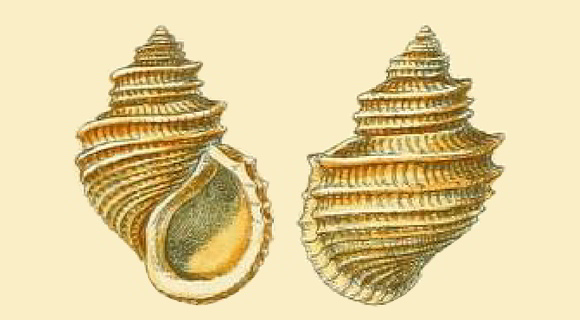
Synonyms: russinoniaca, striatula, trochlea.
Above, Rissoa striatula in Forbes & Hanley: A history of British Mollusca and their shells vol. IV, London 1853, plate LXXIX.
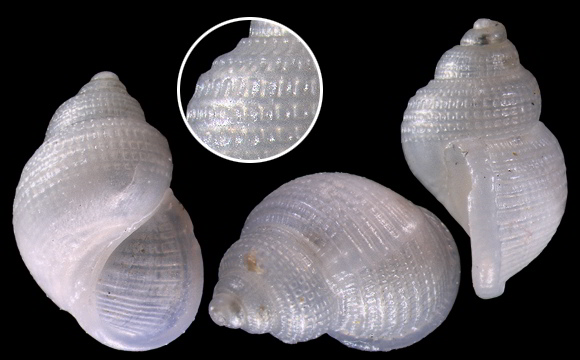
« Rissoa striatula. — Shell conic-oval, with a turreted outline and a slightly twisted base, solid, opaque, somewhat glossy […] Sculpture: several laminar transverse ridges, 10 or 11 of which are on the body-whorl, and 3 only on each of the next three whorls ; those encircling the body-whorl are very unequal in size, the 3 uppermost being by far the largest and most apart one from another ; the 3 basal ridges are also widely separated, the intermediate ones being close together ; the uppermost ridge is placed at some distance from the suture ; the interstices of all the ridges are crossed by numerous incurved striae, so as to give the appearance of very fine lattice-work ; these are stronger and more conspicuous on the upper than under part of the shell ; labial rib thick, sometimes double, or else having a varix on the body-whorl ; top whorls quite smooth and polished. » – J. G. Jeffreys: British conchology vol. IV, London 1867.
Above, a specimen of the variant “acarinata”. The three first spiral ridges below the subsutural ramp, which usually form the keels to which the species-name refers, are less developed than usual. The eastern coast of Spain, and the southern coast of Occitania, France, form an area where this variant is particularly prevalent. – Shallow grit, Anse Bernardi, Port-Vendres, Eastern Pyrenees, S. France. 2,5mm.
Above, a specimen of the variant “acarinata”. The three first spiral ridges below the subsutural ramp, which usually form the keels to which the species-name refers, are less developed than usual. The eastern coast of Spain, and the southern coast of Occitania, France, form an area where this variant is particularly prevalent. – Shallow grit, Anse Bernardi, Port-Vendres, Eastern Pyrenees, S. France. 2,5mm.
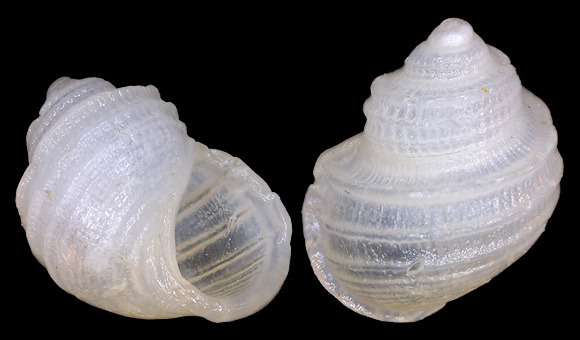
« Suture distinct, but not deep or channelled ; the separation of the whorls is chiefly indicated by the prominent spiral ridge which surmounts each. Mouth large, occuppying about half the length of the spire, roundish-oval, angulated somewhat acutely above and obtusely below, and slightly expanded outwards ; inside plain. Outer lip semicircular, forming a very narrow rim within the labial rib. Inner lip broad and thick, reflected on the pillar, and united with the outer lip at the upper corner of the mouth. Operculum pale horncolour, with a short lateral spire, and very delicately striated. […] This, as well as R. cancellata, adheres with some tenacity to the stones on which it is found ; and when detached it also spins a fine byssal thread, by means of which it suspends itself in the water. » – Ibid.
Intertidal, St-Jacut de la mer, N. Brittany, NW. France. 3,5mm.
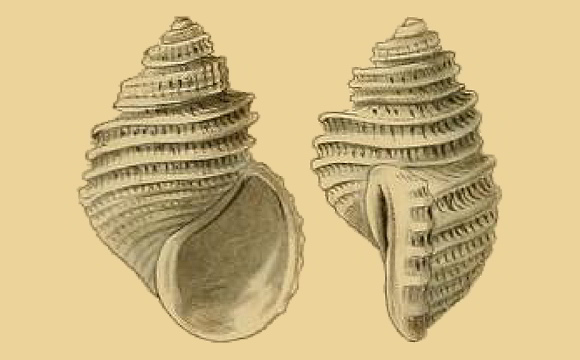
« Testa subsolida, opaca, ovato-acuminata, spira brevi, colore lento flavo candida; anfractibus 5 gradatis (superioribus planis, infero ventricoso et inflato) transversim valde striatis et longitudinaliter tenue plicatis, in ultimo anfractu striis 3 transversalibus superioribus carinatis, sulcisque interjacentibus subtiliter striatis; apertura ampla ovata, superne angustata, inferne subdilatata; labro recto, rotundato, extus incrassato et transversim striato, margine columellari leviter incurvato. » – Ibid. p.130.
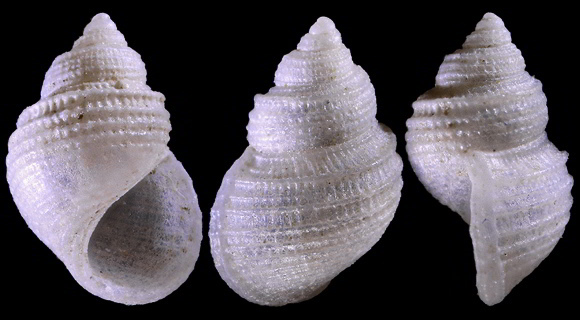
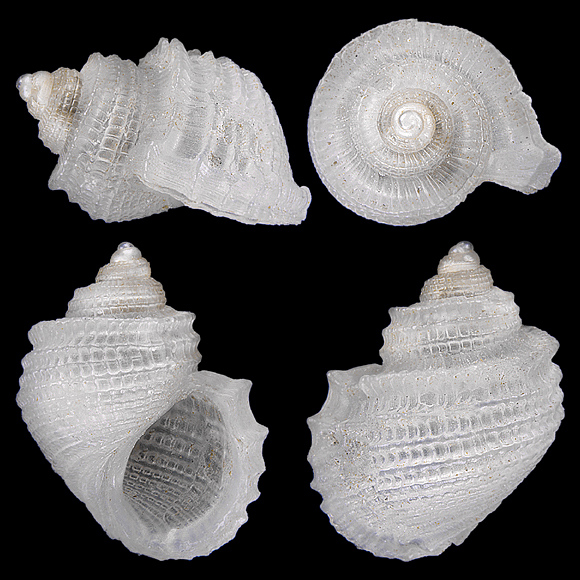
Original pictures provided by A. Nappo (IT).
– (CC BY-NC-SA) –
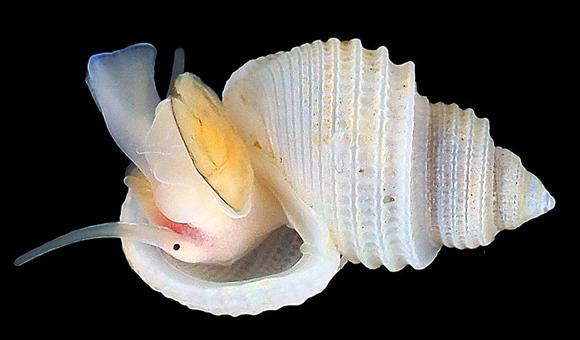
– (CC BY-NC-SA) –